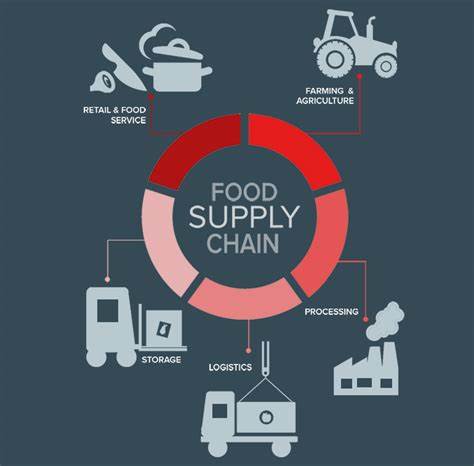Are the supply chains of our food producing systems safe?
As we take a big breath and hope that 2021 will be a time of profitability and less disruption, it would be wise to take this time to think about your supply chains. Pause for a moment and think of the Finnish woman who developed a recipe for baked pasta using feta cheese. Have you heard of “Uunifetapasta”? If not, you are in serious need of a supply chain education. It is a pasta recipe that is extremely cheap, easy to make and more delicious by far than the cost and ease of making might suggest. To what extent the shortages on feta cheese nearly world-wide occurred due to the posting of this recipe on social media are in some debate but once it went viral, finding the key ingredient became temporarily very difficult. Can we dare to wonder what kind of disruptions the various competing social media platforms could cause if mobs of vandals took out after one of your supply chains.
The good old days of producing pigs and marketing them in a regular and systematic way is fading away and giving rise to the era of chain shock. Probably the first thing that comes to mind for you is not feta cheese but the closure of many slaughter plants due to COVID-19 infections among workers. The length and disruption of these closures caused millions of dollars of loss and led to the first US involuntary euthanasia of any scale in decades (if ever).
What you may not know, is that lots of other disruptions could have caused as much or more loss and the thing they had in common was supply chain disruption. Time to get to know your supply chains, how vulnerable each of them makes you and what you can do to strengthen them or do without them (for at least short periods). Most people think of the feed-to-pig production-to-processing chain first, but you have several supply chains providing the necessary elements for successful production and all of them are vulnerable in several new ways. On the farm there are supply chains for gasoline, natural gas, electricity, water, internet, phone, building supplies, spare parts etc. Understanding the vulnerabilities and what backups are readily available makes your production system more robust and resilient. Rethinking stored volumes of certain key inventory items is a critical first move.
During the 2020 pandemic year, driving was dramatically reduced in the US, so the need for gasoline dropped precipitously. The consequence of this was less ethanol was needed and one of the by-products of ethanol distilleries is the capture of food grade CO2. Food grade CO2 has some critical uses in water purification, and food processing. The major suppliers in the US told their supply chain that a maximum of 80% of demand would be fulfilled regardless of contractual commitment. Luckily work-arounds and the easing of the pandemic prevented major problems from developing.

We are entering a time when fringe ideas are in ascendancy and the key western governments and their large food companies are both allowing, and in most cases, promoting if not causing these ideas to become reality. They are happening quickly, much faster than the subsequent chaos can be managed. Prosecuting and penalizing people making the “right” disruptions is negligible as enforcing justice becomes ever more politicized. Much of this change can be accelerated by social media platforms which choose to allow supportive messages and traffic while censoring opposition voices. One of the largest targets in the coming decade will be meat production and consumption. Don’t underestimate how quickly a combined strategy of pinching off critical supply chain goods and demonizing (shaming) consumers of meat could be deployed and be effective.
Sabotage of supply chains through social media by “innocently” creating large volumes of false demand could temporarily seize up critical production supplies. Multiple hoards of “influencers” and organized bands of kids who are amazed at what they can cause to happen, are already in place and in use daily for various ends. They can easily overload and seize up traditional logistics systems which were constructed without these new threats in mind.
You cannot stop all of this, but you certainly can shield yourself from much of the impact, at least for several days, until normal operations resume. It all begins with a comprehensive look at your unique, regional supply chains, enumerating and ranking your critical requirements for production, understanding which items need larger buffering inventories and how you can switch temporarily to alternative sources when required. Chain shock planning and implementation of those plans is now as critical as bio-security.







